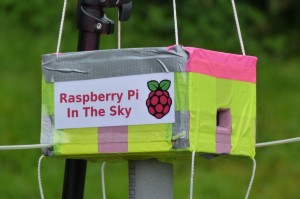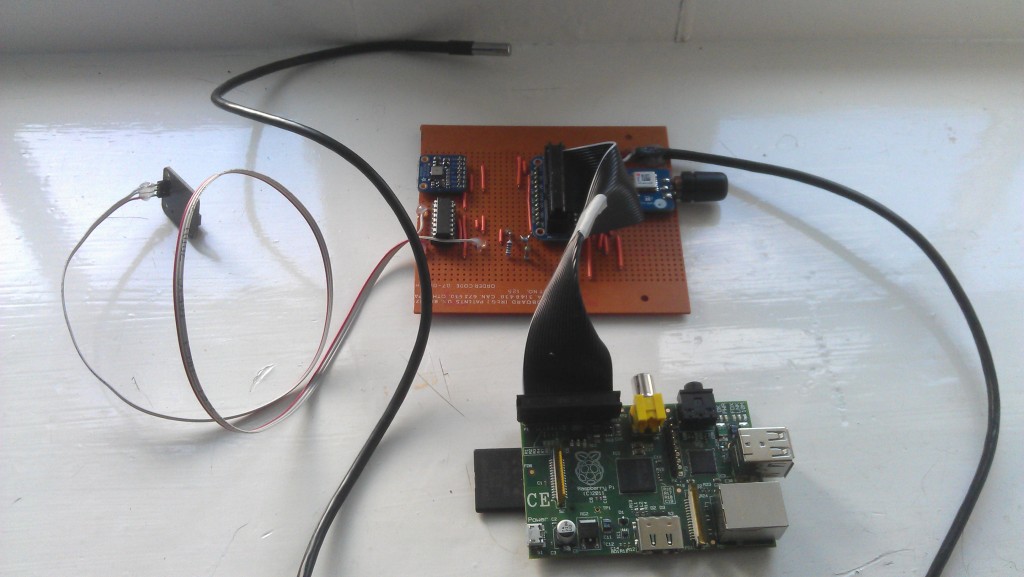| Amazon has taken the first steps to augment product reviews, one of the largest initiatives the company has taken in their 20 year history. Amazon reviews have proved to be critical for people looking to buy a product and have come to trust Amazon more than any other website. A new in-house machine learning program will be putting more weight on verified purchases, new reviews and reviews that people have rated as being useful. This will be a tremendous benefit to books that often have a ton of negative reviews from customers who haven’t even read it. There is a stark contrast between negative reviews and critical reviews. Critical reviews won’t be buried at all if they are helpful with this new system. They could instead jump up to the front page. Unhelpful critical reviews will be buried — as they should be. “The system will learn what reviews are most helpful to customers…and it improves over time,” Amazon spokeswoman Julie Law said in an interview. “It’s all meant to make customer reviews more useful.” The new review system sounds swell, and should go a long way with combating paid review services and internet trolls. On the other hand I know plenty of book reviewers that might not buy a book or Kindle e-book from Amazon, but leave amazing reviews. Does this new system mean that just because its not a verified purchase, less weight will be given to it? I guess if enough people give it an up-vote, it might not. |
A Semi-automated Technology Roundup Provided by Linebaugh Public Library IT Staff | techblog.linebaugh.org
Monday, June 22, 2015
Amazon is Changing Product Reviews
The Future of E-Readers is IMX 7
|
The IMX 7 Dual (1 GHZ) and IMX 7 Solo Lite (800 MHZ) are two new processors that will power the e-reader industry for the next four years. The main attraction of the new product line is the dual core processor and how e-readers will basically take a huge jump forward in terms of overall performance, while remaining future proof. The IMX 7 Dual will be the saving grace of e-readers, it has been totally optimized for e-ink Regal and whatever new technologies that are released by E INK in the future. Why is this important? Page turn speed will be dramatically increased. In the past this mechanism was handled by software, which prevented companies like Amazon, Barnes and Noble and Kobo from taking a big step forward in innovation. Now, page turns are handled by the hardware itself, so each page turn will be less than 100 milliseconds. Solving the page turn program is a big step forward, but that’s not the only thing that is being remedied. Ghosting will also be solved with this framework, which is a huge deal. Normally with e-readers you will have a full page refresh every six pages or in some cases every chapter. The reason for this, is the longer the display goes without a full page refresh text gradually starts super imposing itself, which makes it difficult to read. I have never liked full page refreshes, as it breaks reading immersion. Now, this will also be fixed, which means less full page refreshes because again, its now hardware based, instead of software. Likely the largest innovation in the IMX product line is the support for hardware dithering. This will allow e-reader companies that work with the Linux or Android platforms to be able to include animated content. This will include truly animated page turns, interactive menus and video. The big trend in 2014 were European companies starting to adopt Android as the operating system of choice to power e-readers. Many brands empowered users to install their own e-reading apps, such as Kindle, Kobo and Nook. Sadly, all of these apps were designed for smartphones and tablets and had lots of animated page turns that really struggled with e-ink screens. The IMX 7 dual solves this and will make e-reading on Android way more viable. Battery life has always been a big issue with e-readers. The companies who make them always are walking a fine line between developing cool features that users want and battery performance. Batteries are often one of the biggest costs when designing an e-reader, but this is no longer the case. Using the new processor framework companies can now use smaller batteries, saving on manufacturing costs and also gain 3x the performance vs IMX 6. Mass production on the new IMX 7 product line will begin this November and I was told it was very likely we might see a commercial product from a big name company towards the end of the year. If Amazon, Kobo or Barnes and Noble can be first to the market with a next generation e-reader it could be game changing. AUSTIN, Texas – June 22, 2015 – Today at the 2015 Freescale Technology Forum, Freescale introduced the i.MX 7 series – a new generation of power efficient and full featured applications processors based on its successful and broadly deployed i.MX platform. The i.MX 7 series delivers world class core power efficiency of 15.7 DMIPS/mW, a new Low Power State Retention mode (LPSR) of 250 μW and the industry's first general purpose microprocessor family to incorporate both the ARM Cortex-A7 and the ARM Cortex-M4 cores. These technologies, together with Freescale's new companion PF3000 PMIC, unleash the potential for dramatically innovative, secure and power efficient end-products for the wearable computing and Internet of Things (IoT) era. The first members of the series are the new i.MX 7Solo and the i.MX 7Dual product families, which feature Cortex-A7 cores operating up to 1 GHz and a Cortex-M4 core operating up to 266 MHz. The Cortex-A7 and Cortex-M4 achieve processor core efficiency levels of 100 μW /MHz and 70 μW /MHz respectively. All of the cores can be individually power enabled to perform as needed. This performance-on-demand architecture allows the i.MX 7 series to meet bursty, high-performance needs of running Linux, graphical user interfaces, wireless stacks or other high-bandwidth data transfers with one or both of the Cortex-A7 cores. When high levels of processing are not needed, the work can be transferred to the smaller, lower powered Cortex-M4, enabling the power gating of the Cortex-A7 core. Through the use of an advanced 28nm ultra low leakage process technology and discrete power domain architecture, the LPSR mode consumes only 250 μW, representing 48 percent power savings versus competition, while supporting DDR self-refresh mode, GPIO wakeup, and memory state retention. Creating a system with power efficient processing and low power deep sleep modes enables a new tier of performance-on-demand, battery operated devices requiring smaller batteries and becoming lighter and cheaper. Freescale's i.MX 7 series processors are ideal for a host of applications including wearables, secure point-of-sale equipment, smart home controls, industrial products and a vast array of innovative IoT solutions. i.MX 7 series also continues Freescale's industry leading support for the e-Reader market via integration of an advanced, fourth-generation EPD controller. "Freescale's i.MX 7 series scores industry leading dynamic and static power efficiency numbers, at a fraction of competing devices," said Ron Martino, vice president of Applications Processors and Advanced Technology Adoption for Freescale's MCU group. "We've combined our ultra-low power performance-on-demand architecture and the ARM Cortex-A7 – the most energy efficient ARM processor ever developed – to deliver innovative new features like a new battery savings mode consuming only 250μW, representing a 3x improvement that minimizes wake up times without requiring Linux reboot. High bandwidth connections are provided through a variety of interfaces such as PCIe and Dual Gigabit Ethernet with AVB support. Both of the new i.MX 7 processors support the performance and power driven range of external memories including eMMC5.0 and LowPower-DDR3, meeting higher bandwidth applications. Exceptional security for the Internet of Tomorrow To address increasingly stringent security requirements for Point-of-Sale and IoT applications, i.MX 7 series products integrate Elliptic Curve Cryptography technology, active tamper detection, secure boot and other hardware-enabled features that help to secure sensitive information. In addition, the i.MX 7 architecture features independently controlled and secured resource domains, which partition to isolate security threats and enable a hardware firewall. Driving i.MX 7 power still lower: Freescale's new PF3000 PMIC Also debuting today at the 2015 Freescale Technology Forum is the PF3000 power management IC (PMIC), which was developed in parallel with and optimized specifically for the i.MX 7 series to provide the highest possible overall system power efficiency. With up to four buck converters, six linear regulators, RTC supply, and coin-cell charger, the PF3000 is engineered to support all specified i.MX 7 use cases and conditions. PF3000 PMIC is a fully integrated solution enabling system-level power efficiency by optimizing power delivery not just to the processor, but also to peripherals and various types of system memory resources in an overall component solution size of less than 100mm^2. The PMIC supports one-time programmable memory for controlling startup sequence and output voltages with no external components required. Best in class light load efficiency combined with user programmable Standby, Sleep/LPSR, and Off power modes maximize the i.MX 7 industry leading low power performance. Incorporated into multiple i.MX 7 reference designs and featuring a single price point extensible across multiple cores, operating frequencies and memory types, the PMIC also helps streamline development and lower overall bill of materials costs. Enablement resources Freescale offers extensive enablement support for the i.MX 7 series and leverages the broad ARM ecosystem to enable customers to get to market faster. The i.MX 7 series is supported by the SABRE board for smart devices, which comes with the PF3000 PMIC, Wi-Fi 11ac/abgn, Bluetooth 4.1 and an SD card preinstalled with the Linux® operating system. Android™ OS is also available from Freescale. Availability Samples of the i.MX 7Solo and i.MX 7Dual applications processors are available now with full production planned for November 2015. The PF3000 PMIC is available now from Freescale and authorized distributors worldwide. Two PF3000 board designs are available now: the KITPF3000FRDMEVM evaluation board and the KITPF3000FRDMPGM programming board. For additional pricing or other information, please contact a local Freescale sales office. About Freescale Semiconductor Freescale Semiconductor (NYSE:FSL) enables secure, embedded processing solutions for the Internet of Tomorrow. Freescale's solutions drive a more innovative and connected world, simplifying our lives and making us safer. While serving the world's largest companies, Freescale is also committed to supporting science, technology, engineering and math (STEM) education, enabling the next generation of innovators. www.freescale.com. |
URL: http://goodereader.com/blog/electronic-readers/the-future-of-e-readers-is-imx-7
How OverDrive helps you take your library anywhere…even in the pool!
| This week we had a chance to speak with a user of OverDrive who has been listening to audiobooks from the library to help pass the time during his physical therapy. Using a simple Bluetooth connection and water safe headphones, he user was able to break up the monotony of his workouts by “reading” while he swims. His story is another example of how, with OverDrive, you can take the library with you wherever you go: Recently, my knees became so bad that I had to give up biking last fall.The doctor recommended I try swimming which has been incredible and my knees feel the best they have in 20 years. It has allowed me to continue to be an avid golfer. Unfortunately, after a while I was ready to give up swimming due to the boredom when I was just listening to music. This is when my good friend, Steve Potash, suggested I try listening to audiobooks instead which has made the time fly by. I use the Underwater Audio Waterproof iPod Shuffle by Underwater Audio and the headphones I use are Swimbuds SPORT Waterproof. I always carry extra earbud ends with me to the pool since they do come off and get lost now and then. Since the IPod shuffle is slightly older technology I only load one book at a time and set it on non-shuffle mode. It returns to the portion of the book I was listening to even when I need to recharge it. I swim for an hour at a time and use a snorkel and mask to make it easier on my neck. The iPod has a built in clip that attaches to my mask strap and the headphones are made at perfect (shorter) length for this use but do come with an extension if you need it. Using the OverDrive app to listen to library audiobooks has been great. I end up working out even longer because I want to hear what happens next! |
URL: http://feedproxy.google.com/~r/DigitalDistributionBlogOverdrive/~3/WJbEQoaSuGY/
10 Free Kindle Books for Monday June 22nd
| It’s time for another installment of 10 free Kindle ebooks to help get your week off to a good start. The 10 free Kindle ebooks are free as of June 22nd, 2015. Please note that most of these titles are free for a limited-time only and will expire in a few days. Owning a Kindle […] |
URL: http://feeds.the-ebook-reader.com/~r/feedburner/cmWU/~3/QDOlLlUlyfE/
Skycademy – Free High Altitude CPD
| We’re looking for 24 teachers (or youth leaders) to take part in a FREE two-and-a-half day Continuing Professional Developmet (CPD) event aiming to give attendees some experience of high altitude ballooning, and showing them how they can use it as a teaching tool. Read on to find out more… Over the last few year I’ve seen many awesome uses of the Raspberry Pi, but one of my favourites by far is seeing the Pi used as a payload tracker for High Altitude Ballooning (HAB) projects. One of the most prolific HAB enthusiasts is Dave Akerman, who has launched many flights using the Raspberry Pi, from the first flight back in 2012:
To the launch of a potato for Heston Blumenthal’s “Great British Food”:
And even capturing some amazing images of the recent Solar Eclipse from 30km up.
Many schools are also seeing the opportunities for learning that a HAB flight presents, incorporating physics, maths, computing and geography into one project. Here’s a project from William Howard School in Cumbria, whose students built their own tracker connected to a Pi.
In my previous life as a teacher, I organised a launch with my own students, we had help from Dave Akerman on the day. This turned out to be super helpful, as it takes some planning and there’s a lot to remember. One of the hardest parts of running a flight is the number of different aspects you have to plan and manage. You can test the hardware and software to a certain point, but there’s limited opportunity for a practice flight. Having experience is really helpful. For this reason we’re running our first “Skycademy”, during which we will be giving attendees hands-on experience of a flight. The event will be free to attend and will be spread over two and a half days between the 24th and 26th of August.
Our aim is support and inspire teachers and other adults working with young people. The hope is that those that attend will return to lead a project with their groups that will do something amazing. Attendees will be supported throughout the course by experienced HAB enthusiasts and the Raspberry Pi Education Team. If you are a UK teacher or work with young people (scout leader, youth leader etc), you can apply here. The post Skycademy – Free High Altitude CPD appeared first on Raspberry Pi. |
Good e-Reader Unveils New Google Play App Download Tool
| The Good e-Reader Android and Blackberry App Store is proud to unveil our latest new tool. It allows anyone to download Android APK files from the Google Play USA Store. This is tremendously useful if you want to download the latest apps that are exclusively in the US store and work internationally. The Good e-Reader Google Play Downloader allows you to download any app you want from the US app market. You can finally get your hands on any app you have heard about in the news, but might not be able in your own country. For example, living in Canada I can’t download Entitle, Oyster or Nook Audiobooks. Using this tool you can easily download and subscribe to these services, as well as get the latest games. Using the tool is really easy, simply use Google Search on your smartphone, tablet or PC and find an app you want. Once you arrive at that apps home page on Google Play, just highlight the full URL in your browsers navigation window and then once you are on our download page, just paste the link. It will generate a download for you and you can install the app. This download system will appeal to people who have Blackberry 10 enabled smartphones and want to get the latest apps from Google Play to install on their devices. There are plenty of apps not in the Amazon App Store, so you can get them at Good e-Reader. If you have a Blackberry Playbook tablet you get the APK files and then use our APK to BAR tool. Alternatively, if you use Google Play, but live outside the US, you can bypass geographical restrictions. Why did we make this download system? Well, I found myself often using Google to find a specific Android file and version number. Sadly, most of the sites that host these kind of files have so much advertising black holes it really sucks! I know many people outside the US feel this way as well, there is simply too many crappy sites out there and most of them have viruses or malware. This really encouraged me to make a great tool, that anyone can use for free and simplifies the whole app downloading process. In the coming days we are enhancing our system to allow you to download apps from the Google Play Japan store, so you can get great titles like Street Fighter and Final Fantasy G-Bike. Check out the Google Play APP Downloader today! |




